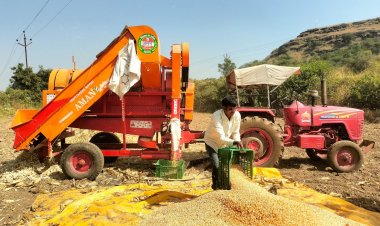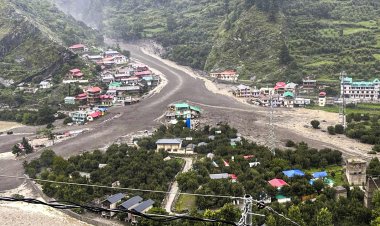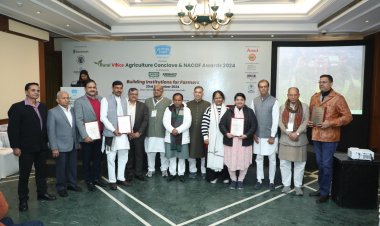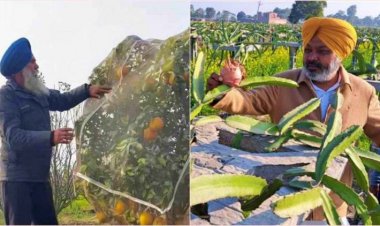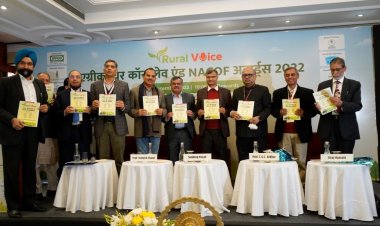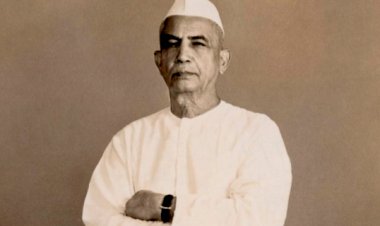No permanent solution of peace clause expected at 13th ministerial conference of WTO
Later this month, Trade Ministers of the World Trade Organization (WTO) would meet for their 13th Ministerial Conference (MC13) in Abu Dhabi at a time when the multilateral trading system is losing an existential battle. This “ruled-based organisation” was mandated to ensure orderly conduct of global trade through a set of rules that were mostly negotiated before 1990 when the organisation had less than 100 members. Over the past four and a half decades, the needs and aspirations of members in the realm of trade have changed beyond recognition as the global economy has undergone significant changes.
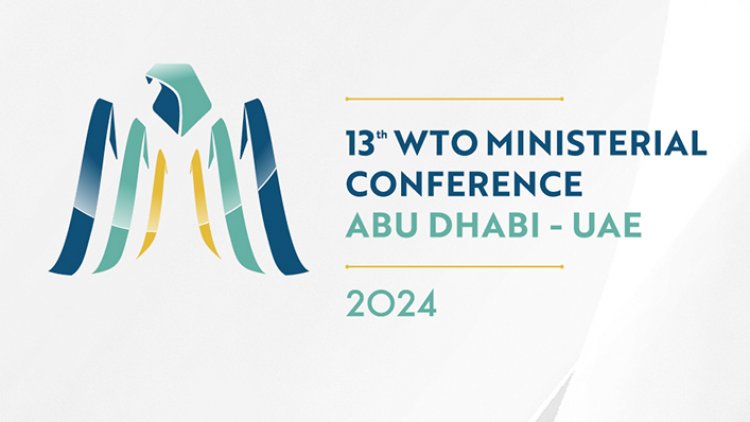
Later this month, Trade Ministers of the World Trade Organization (WTO) would meet for their 13th Ministerial Conference (MC13) in Abu Dhabi at a time when the multilateral trading system is losing an existential battle. This “ruled-based organisation” was mandated to ensure orderly conduct of global trade through a set of rules that were mostly negotiated before 1990 when the organisation had less than 100 members. Over the past four and a half decades, the needs and aspirations of members in the realm of trade have changed beyond recognition as the global economy has undergone significant changes. Several of these changes were triggered by the economic downturns, which have altered the economic orientation of major economies, turning them more internally oriented. In the run-up to MC13, the WTO membership is facing the daunting task of making the multilateral trading system respond to the needs of the contemporary world, especially those of the developing countries.
It is a travesty that WTO members are not reflecting on these systemic problems plaguing the WTO. As of now, members are engaged in issue-based discussions that include review of the disciplines on agriculture and adoption of subsidies disciplines for the fisheries sector, both of which are vitally important for India.
Unresolved Issues in Agriculture
Of the disciplines introduced through the Agreement on Agriculture (AoA), the one on domestic support, covering all forms of subsidies except export subsidies, has been the most contentious for they are focused on removing several forms of policy support for increasing domestic agricultural production. The target of the domestic support disciplines are the two traditional forms of subsidies that farmers have enjoyed, namely, price support measures and input subsidies. Since the United States systematically began providing subsidies in 1933 through the enactment of the Farm Laws, countries across the development spectrum have supported their agriculture for ensuring domestic food security. Countries like India continue to extend subsidies for food security as well as to ensure livelihood security to the larger share of the workforce that directly or indirectly remains dependent on agriculture.
With its explicit focus on removing the more prominent forms of subsidies, the domestic support disciplines ignore the critical objective of food security, which has been referred to in the preamble of the AoA as a “non-trade concern”. There are no provisions in the agreement that operationalised “non-trade concerns”. After the establishment of the WTO in 1995, developing countries argued for substantial amendments in the AoA. The Doha Ministerial Declaration, the first and the most expansive articulation by WTO members to review the AoA, recognised the special character of agriculture in developing countries. The Ministers agreed “that special and differential treatment for developing countries shall be an integral part of all elements of the negotiations and shall be embodied in the Schedules of concessions and commitments and as appropriate in the rules and disciplines to be negotiated, so as to be operationally effective and to enable developing countries to effectively take account of their development needs, including food security and rural development.”
However, this comprehensive review of AoA was taken off the agenda in 2017. Since then, the advanced countries have consistently pushed for reviewing the AoA with a view to limiting the possibilities of using agricultural subsidies for enhancing domestic food security and livelihoods thus reinforcing the existing provisions of the agreement. Such an exercise is afoot in the run-up to MC13.
The review of the agreement on agriculture (AoA) includes a component that is critically important to India. Since the beginning of the previous decade, WTO members have been discussing the issue of public stockholding for food security purposes, the basis of India’s public distribution system (PDS). For India, the significance of this issue increased manifold after the then government decided to implement the National Food Security Act (NFSA) to provide subsidised food grains to two-thirds of the country’s population. However, implementation of the NFSA is covered by the subsidies’ disciplines of the AoA, which stipulates that WTO members must limit their value of subsidies provided to crops and for inputs to 10% of their value of agricultural production. According to the AoA, subsidies for individual commodities are differences between their current administered prices, or market price support and the international prices prevailing during 1986-88 (called “fixed external reference price”), while input subsidies are budgetary outlays. Though this formula defies all economic logic, subsidies for most crops provided by India remained below the 10% threshold as did the overall level of subsidies.
This situation changed after NFSA was introduced, as AoA requires WTO members to include the differences between prices at which food grains for PDS are acquired and their external reference prices as subsidies. This meant that India’s total subsidies would be above the 10% threshold, thus preventing the government from implementing the NFSA. India has consistently argued that the subsidies’ discipline must be amended by either updating the external reference price and/or allowing countries to account for inflation while calculating their subsidies. However, India’s arguments have not been accepted yet.
There is no immediate threat to the future of the PDS, as no WTO member can challenge India for granting subsidies above the 10% threshold because of a “peace clause” that was agreed in 2013. But when the “peace clause” was agreed, it was also decided that WTO members would negotiate on an agreement for a permanent solution for PSH by 2017. Even after six years have lapsed, there has been no agreement amongst WTO members on the “permanent solution” and none is expected in MC13 since the United States has opposed a ministerial decision on this issue in Abu Dhabi.
This leaves the Damocles’ sword hanging over one of India’s largest welfare programmes, to which the government recently gave a new lease of life by extending it until December 2028. However, one of the adverse implications of the “peace clause” is that it prevents India from exporting the grains from the publicly held stocks. In WTO’s Committee on Agriculture, which oversees the Agreement on Agriculture, several countries have been seeking clarifications from India as to whether the food grains procured by the government and held in buffer stocks are eventually finding their way into the international market. The contention of these countries is that India is dumping subsidised grains in the global markets.
It may be pointed out that most countries raising the red flag against India’s exports are the advanced countries who have been supporting the operations of their large companies that dominate the global grain markets. Thus, when large subsidisers are dominating the global market for grains, there is therefore a strong case for India to argue for the removal of the export restriction condition in the “peace clause”. More importantly, this issue must be resolved in the interests of the net food importing countries, for if India is prevented from exporting, global food shortages would get even worse.
A Problematic Agreement on Fisheries Subsidies
The Agreement on Fisheries Subsidies was concluded in 2022 at the conclusion of MC12. The Agreement will come into effect after two thirds of WTO’s membership (or 110 members) formally accept the Protocol of the Agreement on Fisheries Subsidies by depositing an “instrument of acceptance” with the WTO. Until now, 30 members have accepted the Protocol.
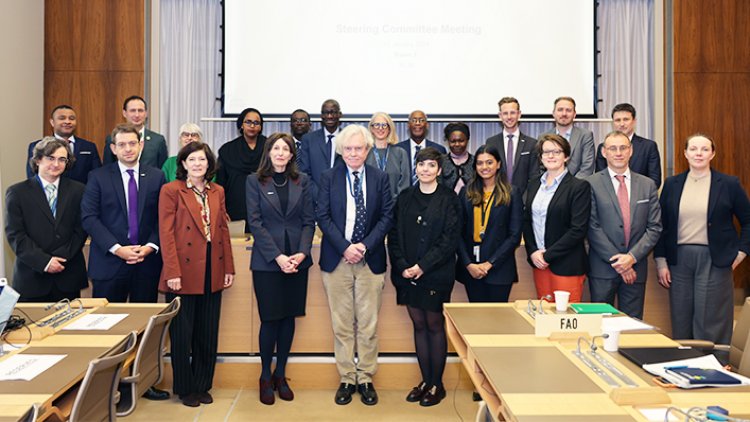
Photo: Meeting on fisheries in the run-up to the 13th ministerial conference to be held from 26th February.
India has a strong economic and moral position on the issue of reining-in fisheries subsidies. India’s consistent position has been that while it is important to eliminate subsidies granted to the commercial interests, which are threatening global fish stocks, there must be a window for continuing subsidies to smaller fisherfolk who have usually followed environmentally sustainable practices. Continuance of subsidies is also vital for protecting the livelihoods of the small fisherfolk.
The Agreement on Fisheries Subsidies does not reflect India’s concerns. The Agreement enables developing countries to provide subsidies for two years to vessels or operators engaged in illegal, unreported, and unregulated (IUU) fishing or for fishing or fishing related activities regarding an overfished stock, up to and within the respective their exclusive economic zones (EEZs). What happens to the future of subsidies to fisherfolk beyond the two years is left uncertain since there is no other provision in the Agreement that guarantees special and differential treatment (S&DT) to developing countries, using which India can grant subsidies.
This issue assumes importance on account of a provision in the fisheries subsidies agreement which states as follows: “A Member shall take special care and exercise due restraint when granting subsidies to fishing or fishing related activities regarding stocks the status of which is unknown”. This implies that subsidies granted for fishing and fishing activities other than IUUs and “overfished stock” have also been put under the scanner in the agreement. While small fisherfolk in India neither engage in IUUs nor in fishing activities involving “overfished stock”, the above-mentioned provision in the fisheries subsidies’ agreement could prove to be an impediment towards continued provisioning of subsidies to the fisheries sector. The reason for this is the fact that the mood in the WTO is to deny China and India the benefits of S&DT provisions, using which the subsidies to small fisherfolk could be continued. Inclusion of S&DT provisions in future negotiations seems problematic precisely for this reason.
In the run-up to MC13, additional disciplines on “fishing or fishing related activities that contribute to overcapacity or overfishing” are being proposed that seek to limit the S&DT provisions only to the least developed countries or developing countries which have a very small share of the annual global volume of marine capture.
As in the previous WTO Ministerial Conferences, India’s principal objective would be to ensure that the decisions taken in Abu Dhabi do not cause excessive harm to its small farmers and the fishing communities. Expectations that multilateral trade rules can be supportive of the country’s development endeavours are passé.
(Dr Biswajit Dhar is former professor, JNU and Vice President, Council for Social Development)



 Join the RuralVoice whatsapp group
Join the RuralVoice whatsapp group

















